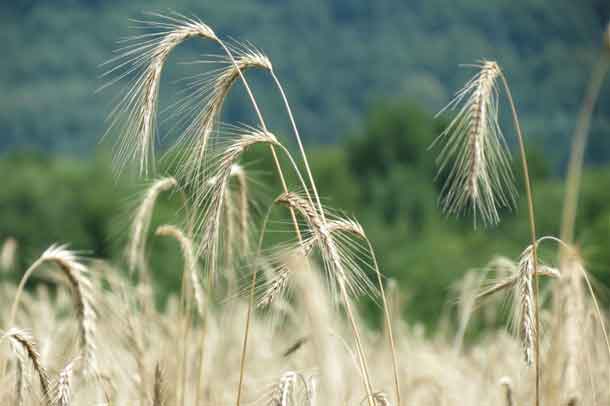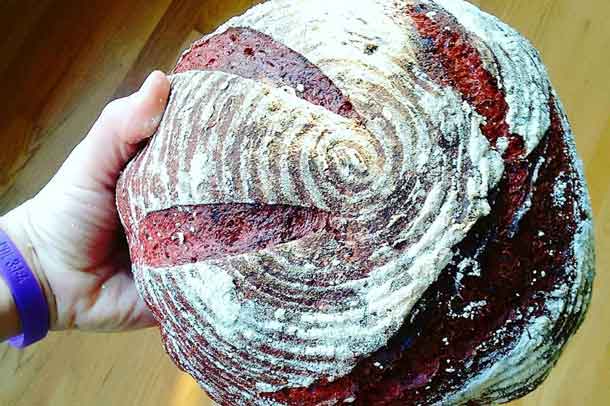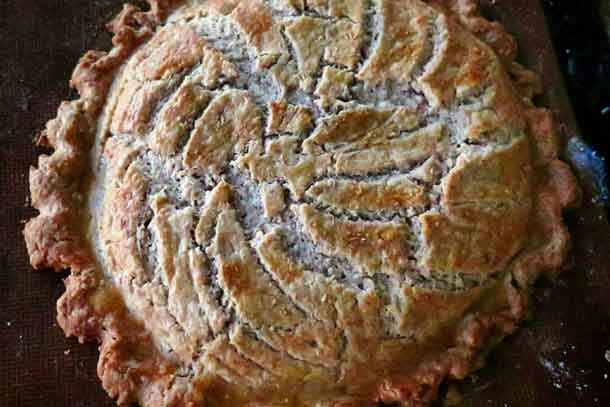
By Amy Halloran – (Zester Daily)
THUNDER BAY – FOOD – Bakers are falling for rye, using the “it” grain in breads and pastries. Jennifer Lapidus of Carolina Ground, a flour mill in Asheville, North Carolina, ran out of rye last year and had to find more. A baker herself, Lapidus has long been a fan of rye’s flavor and heartiness — she runs strong on a rye bread breakfast. Think open-faced sandwiches on dense dark squares, not caraway-flecked half rounds.
Rye is showing up in doughnuts, pie crusts and even croissants. In New York’s Hudson Valley, Bread Alone Bakery has a new line of breads that feature rye. Cubes of the bread are wrapped up in paper and tied with string, presented like a simple gift, which is how co-owner Sharon Burns Leader seems to think of rye.

“Three years ago I went to Denmark, and when I got home I was on a tear, baking rye bread all the time,” said Burns Leader.
Bringing home the rye
She traveled with Standard Baking Co.’s Alison Pray. The two saw rye in many settings, meeting with Noma restaurant co-founder Claus Meyer, working half days in bakeries, tasting breads with chef and cookbook author Trine Hanneman, and snacking midday on chocolate rye rolls. They carried home a deep affinity for the grain.
The enchantment led to Nordic loaves for Bread Alone, which uses locally grown and milled rye, spelt and einkorn. Standard Baking developed a chocolate rye cookie highlighting local rye flour. The only flour in the cookie is rye, and the cookie regularly sells out. Maine Grains, the supplier of that cookie’s flour, saw rye sales begin to increase about a year ago. At this moment in the relocalization of grains, rye’s appeal is timely.

“Rye was familiar to farmers, who grew it as a cover crop. It was welcome news that we want it for bakers,” said Amber Lambke, president of Maine Grains. Lambke helped found the Somerset Grist Mill in Skowhegan, a small town in inland Maine, where for a decade she has been leading efforts to develop regional markets for grains.
Why rye fell out of favor
This is a tall order. Since the American grain belts developed more than 100 years ago, local infrastructure and crop knowledge are long gone. Plus, bread wheat doesn’t favor humid New England summers, and rye does well in cool climates and rocky soils. This is why the wheat the Pilgrims brought did not succeed, but rye did. Cornmeal rye became a standard combo in the colonies.
Rye is the foundational grain for broad swaths of Europe where bread wheat couldn’t be grown. Stanley Ginsberg’s new cookbook, “The Rye Baker,” celebrates this fact, and is escorting bakers through recipes of breads that reflect cultures and traditions.
“For centuries these breads dominated the diet. Each locale had its own unique bread because of its own geographical region. They had terroir,” said Ginsberg. He illustrates the terrains and tastes of rye vividly, starting the book with a color map of rye’s physical and culinary geography.
Heritage baking and a cookbook
His first book, “Inside the Jewish Bakery,” naturally led to “The Rye Baker.” While researching a chapter on rye bread, he learned that by the end of World War II, the rye breads that came with immigrants from northern, central and Eastern Europe had faded from the American scene. The stickiness of rye dough makes production on an industrial scale nearly impossible.
While promoting the book, Ginsberg encountered Seashore Rye from Geechie Boy Mill in South Carolina. Ginsberg adapted a recipe from “The Dixie Cookbook,” published in 1883, to make Heirloom Dixie Rye and put this antique grain in its proper historic context. He found the rye to have a lingering perfume that complemented the cornmeal nicely. The recipe explains how the heritage variety differs in baking from modern ryes. This kind of interpretation is key for any kind of rye. While wheat and rye are in the same plant family, they behave differently in baking. “The Rye Baker” is an encyclopedic guide to rye’s quirks, history and chemistry.
The cookbook is being well received. Rye is also finding a footing here, thanks to Claus Meyer’s launching of Great Northern Food Hall at Grand Central Terminal, with Nordic baking classes this winter, and Meyers Bageri, a bakery in Brooklyn, also located in the food hall. As with real estate, though, location is everything for rye. In the west, rye really takes over and farmers are reluctant to grow it.
Finding a footing here
“Bakers’ excitement doesn’t translate immediately to farmers’ interest or ability to grow a grain,” said Nan Kohler, of Grist & Toll in Pasadena. She has had trouble sourcing the crop.
Camas Country Mill in Oregon solves this problem by growing its own rye; Grist & Toll doesn’t have its own fields, and recently found a farm in Northern California.
However, Kohler sees the strong interest in distilling rye as a market opportunity that will help overcome the barriers to the crop. Solution: If you’re hungry for rye bread that tastes like home, have a nightcap of local rye.
Copyright 2017 Amy Halloran via Zester Daily and Reuters Media Express




